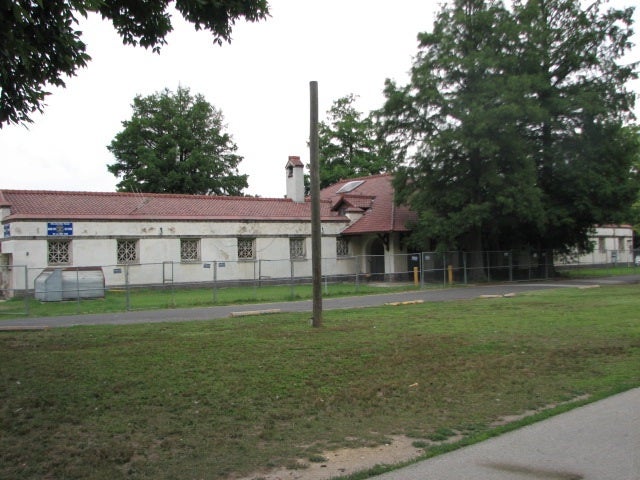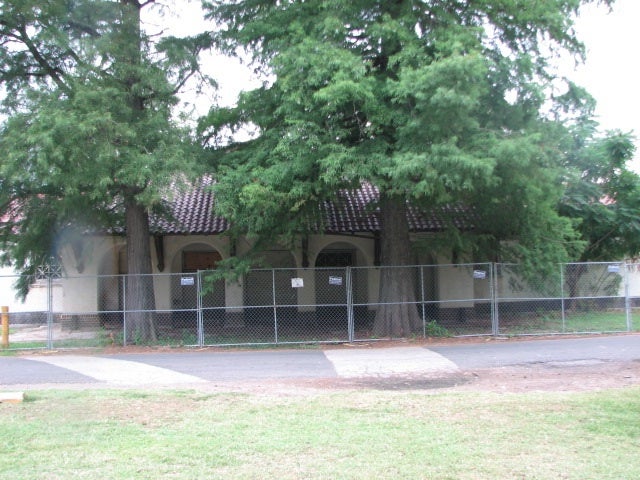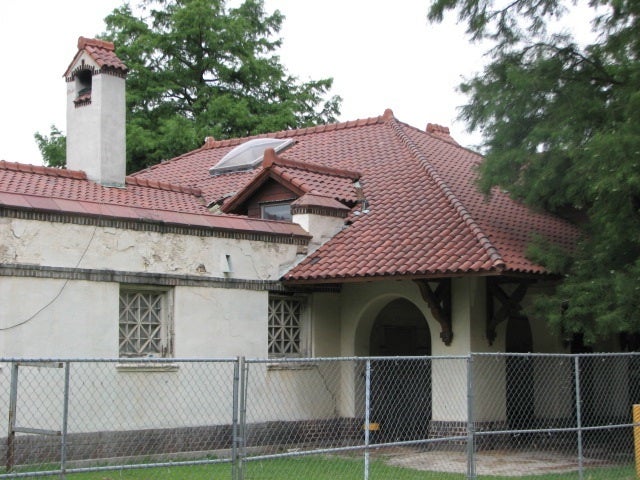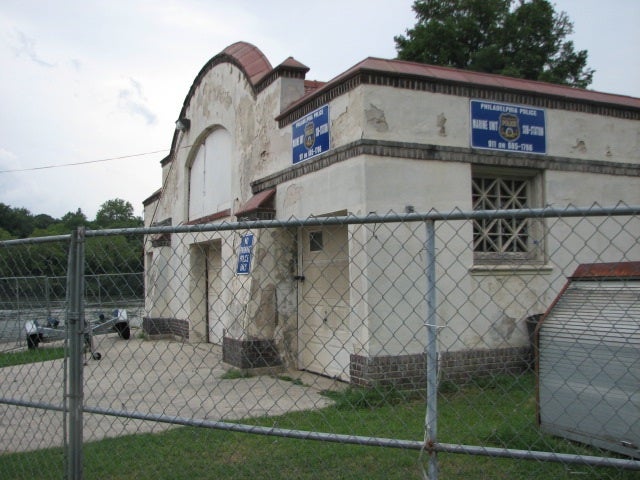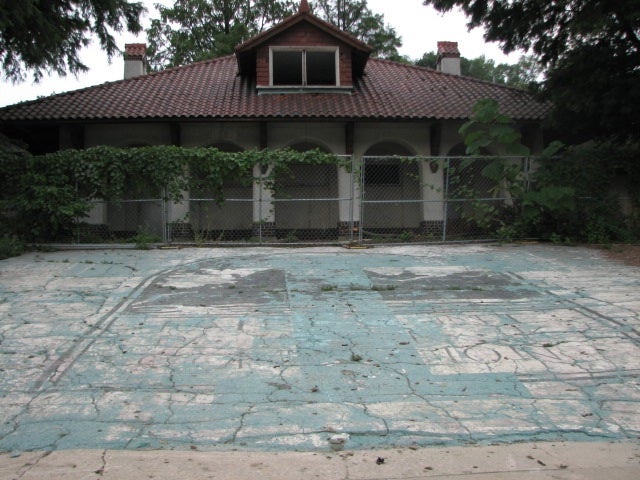Preservation Row: Restoration planned for Mission-style Canoe House
One of the most distinctive boathouses along Kelly Drive is not on Boathouse Row, but a few miles northwest, in the shadow of the Strawberry Mansion Bridge.
The East Park Canoe House is a long, low, Mission-style structure that fits beautifully between river and park and is perfectly suited to house the long, elegant boats that glide along the Schuylkill. For decades, the site served as regatta central for crews from around the region and the nation.
Since February 2008, however, the Canoe House has been shuttered and fenced, following a city inspection that found significant building code violations ranging from problems with the roof and structural beams to the cracking masonry. Rowing teams from Temple University and Father Judge, North Catholic and La Salle high schools, and members of dragon boat clubs who used the facility had to pack up and leave the city-owned building.
The Philadelphia Police Marine Unit continues to store its emergency response equipment in one wing, while overgrowth, graffiti and litter cover much of the property now.
But the Canoe House may no longer seem up the river without a paddle. Last spring, Philadelphia Parks & Recreation led a fundraising effort to replace the facility’s dock. The $180,000 project included $130,000 in city funding and $50,000 in private funds provided by the Philadelphia International Dragon Boat Festival, the Schuylkill Navy and other funders.
The larger challenge – restoring the building – was estimated at a cost of $4.6 million in 2008.
Parks & Rec has taken the next step in the process. “In the recent capital budget we received funding to undertake the planning, design and construction documentation for restoration of the facility. We are developing a [request for proposal] for these services, which will be released upon its completion,” said Mark Focht, First Deputy Commissioner for Parks & Facilities.
“The department is committed to restoring the East Park Canoe House as a rowing/river-related facility,” Focht said.
Plan for Twin Boathouses
In the 1900s, Plaisted Hall, at No. 1 Boathouse Row, was the public recreational facility for canoes and rowboats. As racing took over that section of the river and made it unsafe for pleasure craft, the Fairmount Park Commission proposed building two new boathouses across from each other farther upstream. In 1912, it commissioned Walter T. Smedley to design the two structures.
Smedley, who was trained at the Franklin Institute Drawing School, served his apprenticeship and early years with prominent architect Addison Hutton. Smedley’s residential work included homes in Wynnefield and Frankford, and institutional projects such as the Northern National Bank on Germantown Avenue, Women’s Hospital of Philadelphia on Parrish Street, and Abbotts Alderney Dairies.
For the Canoe House, he chose the horizontal Spanish Mission style to blend into the park setting and to fit its function. The 1913 Report of the Commissioners of Fairmount Park described the “construction on the east bank of the Schuylkill, south of the Trolley Bridge, a canoe house capable of holding 192 canoes or light rowboats, with dressing rooms and showers … constructed of brick with stucco finish, tapestry brick and cut stone trimmings, and roof covered with Spanish tiles.” The facility included 80 lockers for women on the ground level and 200 for men, most of them on the second story.
Smedley’s design was approved by the city’s Art Jury, with some modifications by member Paul Cret. It was erected in 1913-14, though plans for boat slips accessible from a ramp and an elaborate riverfront English garden were never realized. Nor was the proposed west side canoe house ever built.
The interior of the East Park Canoe House underwent modifications from 1948 to 1961. Olympic rowing champion and leading Philadelphian John B. Kelly supervised alterations that would enable storage of sculling shells parallel to the river, using added garage openings on the north and south sides.
The Temple Rowing Team moved into the Canoe House in 1969, followed by the Archdiocesan crews.
In 1995, the East Park Canoe House was designated by the Philadelphia Historical Commission.
Previous Preservation Row stories:
Girard Warehouses
Emanuel Evangelical Lutheran Church
Contact the writer at ajaffe@planphilly.com.
WHYY is your source for fact-based, in-depth journalism and information. As a nonprofit organization, we rely on financial support from readers like you. Please give today.




